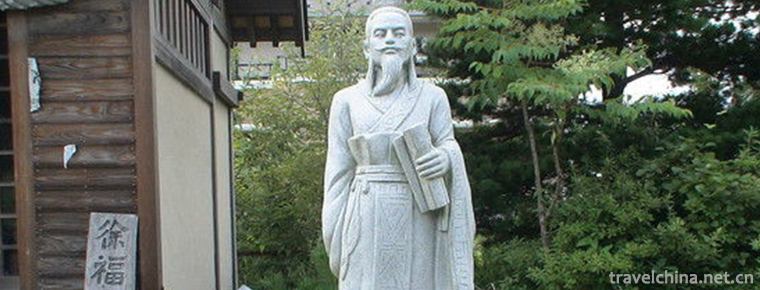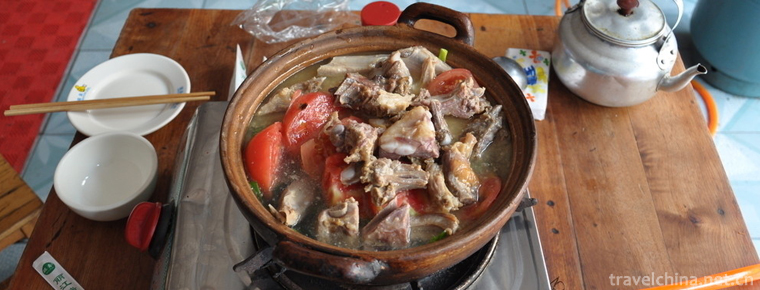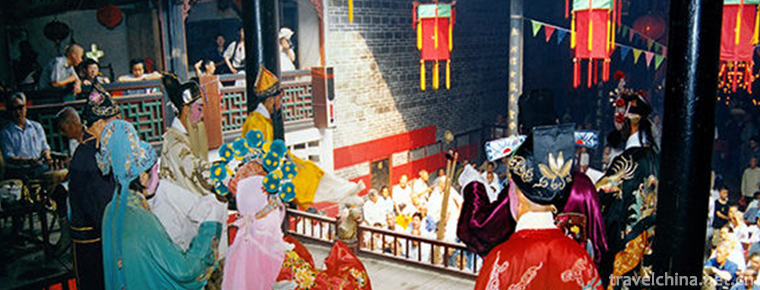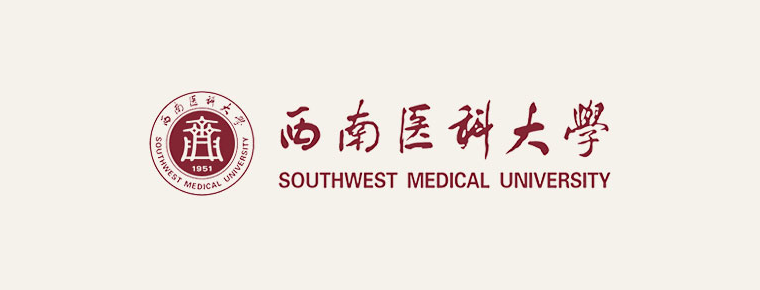Legend of Xu Fudong Du
Legend of Xu Fudong Du
Xufu Dongdu legend is one of the local folklores in Cixi City, Zhejiang Province and Xiangshan County. It originated from the story that Qin Shihuang sought immortality and Xu Fu sought immortality but had to go east to Japan.
On June 7, 2008, Xu Fu Dongdu Legend was approved by the State Council to be included in the second batch of national intangible cultural heritage list.
Historical Origin
In 221 BC, Qin Shihuang unified China and established the Qin Dynasty. In the third year (219 B.C.), after Mount Tai was fengchan, in order to live forever, he traveled eastward to the sea hoping to meet Mount Xianshan. Xu Fu, an academician, wrote, "Speak fast, and seek it with boys and girls." (Historical Records) So Qin Shihuang "left thousands of Xu Fufa boys and girls to seek immortals in the sea." Xu Fu searched for "Xianshan" successively in the Bohai Sea and the Yellow Sea, but failed to find it. In the winter of 210 B.C., Emperor Qin Shihuang made a tour to the south, accompanied by Prime Minister Li Si and Emperor Hu Hai, and crossed the Qiantang River. Xu Fu learns that the killing of terrorists is a long voyage away from the Penglai Mountains of Xiangshan and a turning point to Tazhou, now known as Japan.
Inheritance Significance
As the departure place of Xufu Dongdu, Dapeng Mountain is located in the Longshan and Sanbei areas of Cixi. There are cliff stone carvings and Qindu Temple on the mountain. Xufu legend is widely spread and has great influence in China. There are many legends in Japan and Korea. There are 32 places where Xufu Dongdu landed in Japan and 56 stories. There are 40 legends in Cixi, which have wide influence. Xu Fudong crossed the river of cultural exchange between China and Japan, creating a friendship between China and Japan, which is of great significance. Xu Fu's introduction of Qin civilization to Japan has promoted the leap from rope pattern (primitive) culture to Yosang (ironware tillage) culture in Japanese society. Xu Fu is known in Japan as "God of Agriculture", "God of Silkworm and Mulberry" and "God of Medicine". Xu Fu's legend is of great historical value to the study of immigrant culture. Former Japanese Prime Minister Hamada Zi (progeny of Xu Fu) once led a team to seek roots in the three north areas of Cixi. Japanese friendly personages jointly built a memorial hall of Xu Fu with China, which continued the story of the traditional friendship between China and Japan.
Xu Fudong's journey to Japan contributed to the birth of a "lifelong culture". At that time, there was no writing or farming in Japan. Xu Fu brought words, farming and medical technology to Japan. For this reason, Xu Fu naturally became the "god of agriculture" and "god of medicine" in the eyes of the Japanese people. This is gradually discovered and excavated along with Archaeology and the interaction between the two peoples. In recent years, carbonized rice grain remains have been found in the archaeological site of Banfu, Fukuoka County, Japan. The carbonized rice found in the area of Jinhai, Pusan, Korean Peninsula, is the same type as that found in the area of Jinhai, Pusan, Korean Peninsula. This shows that in the same historical period, the Japanese people began agricultural production, especially rice cultivation. During the same period, Japan also began to use bronze and iron tools and silk fabrics, and began to have text. All of these have nothing to do with the Japanese rope culture before. Japanese academics and archaeologists generally acknowledge that the culture of Yasui originated from the coastal culture of northern China. This is why Japanese characters are similar to Chinese characters.
Current situation of inheritance
Xufu Dongdu legend is a kind of local folk literature which depends on oral inheritance. Therefore, under the impact of modern life, it is declining day by day. At present, the governments of Cixi City and Sanbei Town in Zhejiang Province attach great importance to the protection of Xufu Dongdu legend. In 1995, the Xufu Research Association was established. It published a special issue of Dapeng Tracking, published Dapeng Mountain and Medical Laixian Island, Dapeng Road and other information collections, compiled Dapeng Road-Xufu and Cixi Dapeng Mountain, Dapeng Mountain and Penglai Xiandao-Xufu Dongdu Story, Xufu Dongdu Songs Collection, etc. Huahua Art Festival; protection of historical relics such as Xu Fudong Du and cliff stone carvings; 3.5 million yuan prize money to shoot the TV series "Xu Fudong Du Legend" and so on.


-
Dongchuan Red Land Scenic Area
"Dongchuan Red Earth" is located in the north-east direction of Kunming.
Views: 154 Time 2018-10-21 -
The Oriental Pearl Radio & TV Tower
The Oriental Pearl Radio and Television Tower is one of the landmark cultural landscapes in Shanghai. It is located in Lujiazui, Pudong New Area, with a height of 468 meters.
Views: 608 Time 2018-12-05 -
Songxian Tianchishan National Forest Park
The Tianchishan National Forest Park in Songxian County, Luoyang City, is located in Xionger Mountains, northwest of Songxian County, Luoyang City, with a total area of 1716 hectares and a forest cove.
Views: 133 Time 2019-02-13 -
Donghe Opera
Donghe Opera, one of the national intangible cultural heritage, is a traditional drama in Donghe area of Ganzhou City, Jiangxi Province..
Views: 176 Time 2019-04-27 -
Comic Opera Funny opera
Funny opera is one of the local dramas in Shanghai. It is now mainly popular in Shanghai and its surrounding Wu dialect areas..
Views: 260 Time 2019-05-04 -
The 70th Anniversary of the Founding of New China
On January 11, 2019, the Third Plenary Session of the 19th Central Discipline Inspection Committee of the Communist Party of China opened in Beijing. Xi Jinping, General Secretary of the CPC Central.
Views: 601 Time 2019-05-04 -
Liang Pings Gong and drum
Liangping Gong and drum is a kind of traditional folk instrumental music spread in Liangping District of Chongqing. In Liangping, the predecessors said that "Shu people Chao shan, gongs and drums.
Views: 292 Time 2019-05-13 -
Weaving Techniques of Summer Cloth
Wanzai summer cloth is completely manually woven. Its production process mainly consists of ramie treatment, yarn performance and weaving. It needs many processes to weave..
Views: 201 Time 2019-07-01 -
Southwest Medical University
Southwest Medical University is an ordinary university in Sichuan Province. It is located in Luzhou, a famous historical and cultural city and a civilized city in the region of Sichuan, Yunnan, Guizho.
Views: 121 Time 2019-08-31 -
Guangyuan secondary industry
In 2018, the total industrial added value of Guangyuan was 30.018 billion yuan, an increase of 9.4% over the previous year. The contribution rate of industry to economic growth is 44.3%, which drives economic growth by 3.7 percentage points..
Views: 329 Time 2020-12-15 -
Nanchong science and technology
In 2019, Nanchong implemented 97 key science and technology plan projects, an increase of 7.8% over that in 2018, including 83 national and provincial science and technology plan projects. It won 11 provincial science and technology progress awards. In the whole year.
Views: 144 Time 2020-12-17










